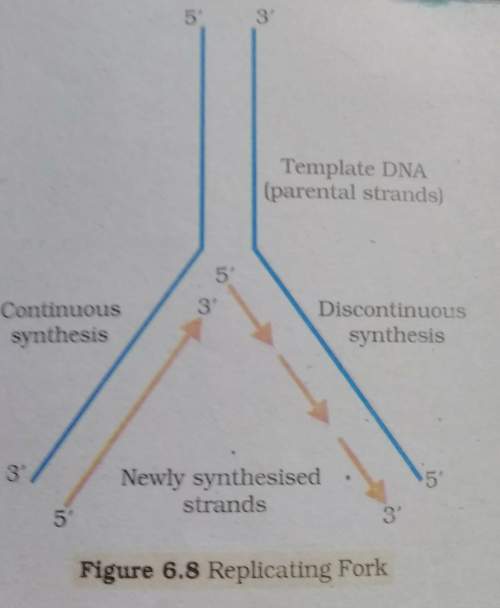
Biology, 19.05.2020 03:02 karnun1201
Which answer below correctly identifies the type of change and the explanation for the change in calcium
carbonate?
A. physical change because even though a state change was observed the calcium carbonate
retained its original properties
B. physical change because even though a particle size change was observed, the calcium carbonate
retained its original properties and was not transformed into a new substance
C. chemical change because a state change was observed, which indicated that the calcium
carbonate was transformed into a different substance
D. chemical change because a particle size change was observed, which indicated that the calcium
carbonate was transformed into a different substance

Answers: 3


Another question on Biology

Biology, 21.06.2019 19:30
The diagram below represents a marine food web and a process that can harm the human population. each circle represents an organism and the smaller dots inside them represent a toxic substance. what is being represented and how does it harm the population? the diagram represents biological half-life, in which toxins build up in organisms higher up on the food chain, and this can negatively impact humans who consume the organisms and the toxic substance. the diagram represents biomagnification, in which toxins build up in organisms higher up on the food chain, and this can negatively impact humans who consume the organisms and the toxic substance. the diagram represents the process by which different organisms prey upon each other; this can impact the human population by reducing the number of organisms that do not contain the toxin. the diagram represents the way that toxins are metabolized by living organisms, with those at greater trophic levels able to metabolize more efficiently than those at lower levels. this means that those at higher tropic levels are safer for humans to consume compared to the organisms at lower trophic levels.
Answers: 1

Biology, 22.06.2019 01:50
Which statement best describes lactic acid fermentation? a. lactic acid fermentation is the first step of cellular respiration. o b. lactic acid fermentation is the final step of cellular respiration. re to berate c. in the absence of oxygen, cells release atp by breaking down lactose into glucose. e der lade res o d. in the absence of oxygen, cells release atp by breaking down glucose into lactate. ar
Answers: 1

Biology, 22.06.2019 09:00
What causes eclipses? check all that apply. earth's rotation on its axis moon's shadow covering the sun earth's shadow covering the moon earth's orbit and moon's orbit occasionally aligning the moon and sun's gravity pulling in the same direction
Answers: 3

Biology, 22.06.2019 09:30
You have just sequenced a new protein found in mice and observe that sulfur-containing cysteine residues occur at regular intervals. what is the significance of this finding? it will be important to include cysteine in the diet of the mice. cysteine residues are required for the formation of α helices and β pleated sheets. cysteine residues are involved in disulfide bridges that form tertiary structure. cysteine causes bends, or angles, to occur in the tertiary structure of proteins.
Answers: 1
You know the right answer?
Which answer below correctly identifies the type of change and the explanation for the change in cal...
Questions

Chemistry, 03.02.2020 17:43

Mathematics, 03.02.2020 17:43


Mathematics, 03.02.2020 17:43

Mathematics, 03.02.2020 17:43


Mathematics, 03.02.2020 17:43

Mathematics, 03.02.2020 17:43

Biology, 03.02.2020 17:43



Mathematics, 03.02.2020 17:43



History, 03.02.2020 17:44

Social Studies, 03.02.2020 17:44



English, 03.02.2020 17:44

English, 03.02.2020 17:44




